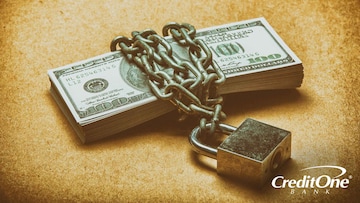How Long Does It Take for a Secured Card To Become Unsecured?
August 12, 2024
Discover how secured credit cards can help you build credit and upgrade to an unsecured card. Learn the steps and benefits of having an unsecured card.

A secured credit card can be an essential resource for individuals with a limited credit history or a low credit score. It can help you establish your credit by providing a structured way to demonstrate responsible credit use and improve your creditworthiness over time.
However, many wonder when they can upgrade their secured card to an unsecured one and enjoy the perks associated with an increased credit limit. It typically takes anywhere from 6 months to 18 months for a secured card to become unsecured, but this timeline can vary.
In this guide, we'll discuss the factors affecting your ability to obtain an unsecured credit card and how to expedite the process.
Understanding Secured Credit Cards
A secured credit card is comparable to a traditional credit card, except for one significant difference — you are required to put down a cash collateral payment. This deposit serves as a safeguard for the lender in the event that you miss payments or default on your account.
Usually, your credit limit matches the amount of your deposit. For instance, if you put down a $500 deposit, your credit limit will be set at $500. The lender holds your deposit, which will only be used if you fail to make payments.
Secured cards are frequently suggested for individuals with financial issues because they provide an opportunity to establish credit without the risk associated with qualifying for a conventional credit card and potentially accruing more debt.
Secured vs. Unsecured Credit Card: What’s the Difference?
If you're new to credit, you may wonder what the difference is between a secured and unsecured credit card. Here are a few key distinctions:
Collateral: As mentioned, secured credit cards require a cash deposit as collateral, while unsecured cards do not.
Approval criteria: Secured credit cards are easier to obtain for those with limited credit, as the security deposit reduces the risk for the issuer. Unsecured credit cards require a stronger credit score and a solid credit history for approval.
Rewards and benefits: Secured credit cards often have limited or no rewards programs and benefits compared to unsecured cards, which usually offer a variety of bonuses such as cash back, and additional perks like purchase protection and travel insurance.
These differences are essential to understand when considering applying for a secured card or upgrading to an unsecured one.
How To Get a Secured Credit Card
Whether you're aiming to build your credit or establish a new credit history, getting a secured credit card is relatively straightforward. Here are the steps you can follow:
Check your credit score: Evaluate the necessity of acquiring a secured credit card based on your circumstances. Depending on your situation, you may be eligible for an unsecured card instead. A FICO Score between 580 and 669 can significantly enhance your chances of approval for an unsecured credit card.
Apply for a secured card: If you've decided that a secured credit card is the right choice for your needs, the next step is to apply. Explore different options and choose one that aligns with your preferences, considering factors like annual fees, interest rates, and credit limits.
Put down a deposit: After approval, you must put down a cash deposit. This deposit will determine your credit limit.
Following these steps will eventually open the door to an unsecured card, allowing you to enjoy a higher credit limit and receive better rewards and benefits.
How To Graduate From a Secured to an Unsecured Credit Card
Seeing your credit score increase and your financial habits improve can be exciting. Once you've used your secured card for a while, you may wonder when you can upgrade to an unsecured card. Here are a few things you can do to get to the next level:
Build Your Credit History
The main purpose of a secured card is to help you establish or rebuild your credit history. Your payment history and responsible credit usage determine your eligibility for an unsecured card.
Make monthly on-time payments and keep your credit utilization low, ideally below 30%. Doing so will show lenders that you can handle credit responsibility, which can lead to qualifying for an unsecured card sooner.
Improve Your Credit Score
Your credit score is a main factor in determining how long it takes to be approved for an unsecured card. Usually, lenders prefer to see a credit score of around 650 or higher before they consider upgrading a secured credit card to an unsecured one.
If you start with a low credit score, it may take longer for you to reach this threshold and become unsecured. You can gradually improve your credit by providing timely payments and maintaining low credit utilization.
What You Can Do To Speed Up the Process
While six to 18 months may seem like a long time to wait for an unsecured card, there are some steps you can take to potentially speed up the process. Here are a few tips:
Monitor your credit score: Check your credit score regularly and look for areas of improvement. By proactively improving your credit, you can reach the approval threshold for an unsecured card sooner.
Ask for a credit limit increase: If you have been making on-time payments and have a good credit standing, you can ask your lender for a credit limit increase. This shows responsible credit management and may help speed up your upgrade.
Apply for another credit card: If you have been working on building your credit and have a good payment history, you can also consider applying for a traditional credit card. Having multiple lines of credit and managing them responsibly can improve your overall credit profile and expedite the process.
However, you should take these steps with caution. Requesting multiple credit accounts simultaneously can have a detrimental effect on your credit score.
Benefits of an Unsecured Credit Card
You can enjoy several benefits once you have successfully upgraded your secured card to an unsecured one. From improved credit options to higher credit limits, here are some advantages of unsecured credit cards:
No Collateral Required
The most obvious benefit of an unsecured card is that you no longer have to put down a cash deposit as collateral. This means you can use the credit card without having to tie up your funds in a deposit.
Higher Credit Limit
You may also be eligible for a higher credit limit with an unsecured card. This can provide more purchasing power and flexibility when managing your finances. However, it's essential to use this credit wisely and not overspend.
Potential for Better Rewards
Many secured cards have limited rewards programs or none at all. With an unsecured card, you can enjoy better rewards, including travel points or discounts on purchases.
Improved Credit Score
Increasing your credit limit on an unsecured card can further enhance your credit score. Responsible usage and on-time payments can decrease your credit utilization, positively impacting your overall credit profile.
Although it requires time and effort, transitioning from a secured card to an unsecured one can greatly enhance your credit profile and open up more financial opportunities. If you’d like a credit card designed to help you build your credit score when you make timely payments each month, see if you pre-qualify for an offering from Credit One Bank, including a secured card.



